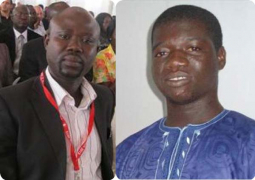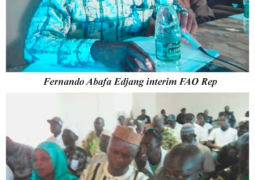Hello and warm welcome to the first edition of Agriculture & Development, a weekly column that highlights agriculture and issues affecting farmers.
This week agriculture and development column looks at some of the agricultural project interventions, benefits, impacts on the livelihood of the famers, challenges and suggestions in adopting best practices and strategies in improving agricultural production and productivity across the country.
This week we bring you a successful project under the Ministry of Agriculture called the Gambia Emergency Agricultural Support Project (GEAPSP2) implemented by the West African Productivity Programme (WAAPP).
The Gambia Emergency Agricultural Support Project is funded by the Japanese Social Development Fund through the World Bank to the tune of $2,850 million grant to the Gambia government for the implementation of the Gambia Emergency Agricultural Support Project 2.
The Gambia Emergency Agricultural Support Project called GEAPSP2, is directly under the WAAPP project coordinating unit and is expected to benefit at least 100,000 individual farmers and herders within 20,000 small-holder farm families affected by the 2011/2012 Sahelian crop failure.
This was disclosed by Madam Yassin Khan, acting coordinator for WAAPP, which is implementing the GEAPSP2, during a two-day stakeholders meeting on the development of GEAPSP seed distribution plans for beneficiaries identification for the 2014-2015 crop season.
The meeting was organised under the auspicious of the Gambia Emergency Agricultural Productivity Support Project (GEAPSP) held at the Paradise Suites Hotel recently.
According to her, the banks’ emergency support would focus in increasing access to agricultural inputs for at least 100,000 individual farmers and herders within 20,000 small-holder farm families affected by the 2011/2012 Sahelian crop failure.
The project also targets increasing access to water through the rehabilitation of 50 wells for vegetable production, as well as target increasing access to livestock feed, feed supplement and health production in vulnerable zones.
Madam Khan said further that the project, which will be implemented in a 24-month period, is intended to restore agricultural productivity capacity of 25 districts affected by 2011/2012 crop failure.
She noted that the targeted districts were identified based on the multi-sectoral post-harvest assessment report.
Regarding the two-day stakeholders meeting with NGOs and the management of the WAAPP, NARI and extension workers, Madam Khan said this was a session where the stakeholders would develop a criterion through which they were going to distribute the inputs procured by GEAPSP.
Talking about the project objectives and its components, Madam Khan said the idea of GEAPSP2 came after the 2011 crop failure.
There was an assessment done and key in that assessment were the National Disaster Management Agency (NDMA), WFP, MOA, the UNDP and UNICEF.
According to Madam Khan, GEAPSP2 was meant to start on 31 July 2012 but for some reasons the first fund were received end of September 2013.
She added that the initial plan was meant to end July 2014 but the money came late and it would close around December this year.
She said the objective was to restore the capacity target of households and herders focusing on crop and livestock, adding that the project had three components; to increase access to agricultural inputs and through this component they would procure five hundred tons of certified seeds, so that three hundred and fifty tons would be of rice seeds.
Fifty tons would be early millet seed and one hundred tons of maize seeds, she said: “We are expected to buy one thousand-seven hundred metric tons of fertilizers and this was appropriately divided into NPK fertiliser and Urea.”
Component B was to facilitate access to water for the project to rehabilitate 50 wells across the country.
According to Madam Khan, the initial plan of the project was to intervene in 19 most affected districts across the country.
These districts comprise 428,000 inhabitants and, by extension, the project document indicates that the project has to intervene in the border district, which has a total of 177,000 inhabitants.



